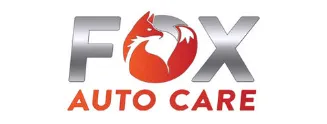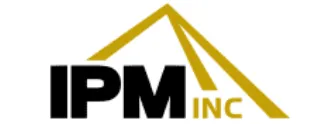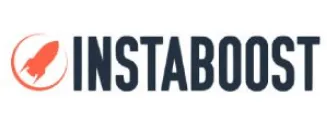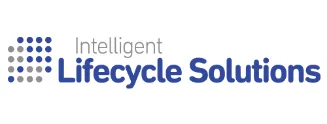How to take advantage of the
Employee Retention Tax Credit
Up to $26k per W2 Employee
Your business may be eligible. Apply before funds run out.
Some Examples

CAR DEALERSHIP
32 EMPLOYEES
$273,000

CAR DEALERSHIP
32 EMPLOYEES
$273,000

CAR DEALERSHIP
32 EMPLOYEES
$273,000
What are the risk involved in claiming the ERTC?
Claiming the ERTC carries minimal risk, as the credit is a direct payment from the IRS and is not a loan that needs to be repaid. However, it's important to ensure that you meet all eligibility requirements before applying.
What if my cpa already told me i don't qualify for the ertc?
If you've been told that you don't qualify for the ERTC, it's worth seeking a second opinion. Our team can assess your eligibility and help you understand your options.
Can i access the ertc if i received ppp loans?
Yes, you can still claim the ERTC even if you received Paycheck Protection Program (PPP) loans.
Fill Out The Form Below To Schedule A Free Evaluation
Available to Industries Affected by the Pandemic
The ERTC program isn’t specific to a particular industry. It is available to businesses in all industries that have been affected by the pandemic.
Begin your claim
What can ERC Express do for you?
Are you a business owner who hasn’t yet applied for the Employee Retention Tax Credit (ERTC)? Don’t worry, you’re not alone. It can be overwhelming to navigate, especially when you have a business to run. That’s where our team at ERC Express comes in. We will guide you through the application process and ensure that you receive the maximum benefit available to you.
Find Out if You QualifySpeak with Our Tax Experts Today
Applied for PPP?
Not a problem, you can still qualify for ERTC.
Our team of experts can assist you in applying
We understand that payroll providers and other professionals may not have the time to dive into the legislation surrounding the ERTC. That’s why we have assembled a team of dedicated tax professionals who specialize in this relief program. Our experts will work with you and your financial officers to ensure that you receive the maximum benefit from this often-misunderstood program.
Even if you’ve already received an opinion from another tax professional, we encourage you to spend just 15 minutes with our team. Our trusted due diligence process will determine your eligibility for the ERTC and explain why you may be entitled to benefits, even if you did not experience a drop in revenue. Contact us today to learn how we can help you maximize your ERTC benefits.
Contact Us
Example Success Stories
Below are the example tax credits that qualified under the CARES Act.
Eligible Employers can fund qualified wages in two ways. First, they can access federal employment taxes, including taxes that are withheld and required to be deposited with the IRS. Secondly, they can request an advance of the credit from the IRS for any amount of the credit that is not funded by accessing federal employment tax deposits. This is done by filing Form 7200. (Advance Payment of Employer Credits Due to COVID-19.)
Under section 2302 of the CARES Act, employers are also able to defer the deposit of their share of social security taxes due before January 1, 2021, and reduce other employment taxes required to be deposited by an amount equal to the FFCRA sick leave and family leave credits, as well as the Employee Retention Credit.
For example, if an employer paid $10,000 in qualified wages (including qualified health plan expenses) and was required to deposit $8,000 in federal employment taxes for all of its employees for wage payments made during the same quarter as the $10,000 in qualified wage. The employer could keep up to $5,000 of the $8,000 of taxes he/she was going to deposit. The employer will not owe a penalty for keeping the $5,000, and it will account for the $5,000 when filing Form 941 for the quarter.
- Fully or partially suspend operation during any calendar quarter in 2020 due to orders from an appropriate governmental authority. But limiting commerce, travel, or group meetings (for commercial, social, religious, or other purposes) due to COVID-19.
- Experience a significant decline in gross receipts during the calendar quarter.
It’s important to note that governmental employers are not considered Eligible Employers for the Employee Retention Credit, but tribal governments, and tribal entities, may qualify. Self-employed individuals are also not eligible for the credit for their own self-employment earnings, but they may be able to claim the credit for wages paid to their employees.
The second criteria is a revenue decline. To qualify, your business must have had 500 or fewer employees in 2019. And your company’s quarterly gross receipts in 2020 and 2021 must be at least 20% lower than the corresponding quarter in 2019. This is to show that your company was financially impacted by the COVID-19 pandemic.
It’s important to note that while a revenue decline is one way to qualify, it’s not the only way. Businesses that experienced a disruption in operations (even if they didn’t have a revenue decline) can still be eligible for the credit. Additionally, to be eligible, your company must be a private sector or tax-exempt organization that was partially or fully shut down due to COVID-19.
Connect to an Expert.
Have questions about ERTC? If you’re business owner in the US who has been affected by COVID-19 pandemic, you may qualify for the Employee Retention Tax Credit. This federal stimulus program is designed to provide financial relief to businesses that have experienced a decline in revenue due to the pandemic.
Apply Now FREE CONSULTATION








